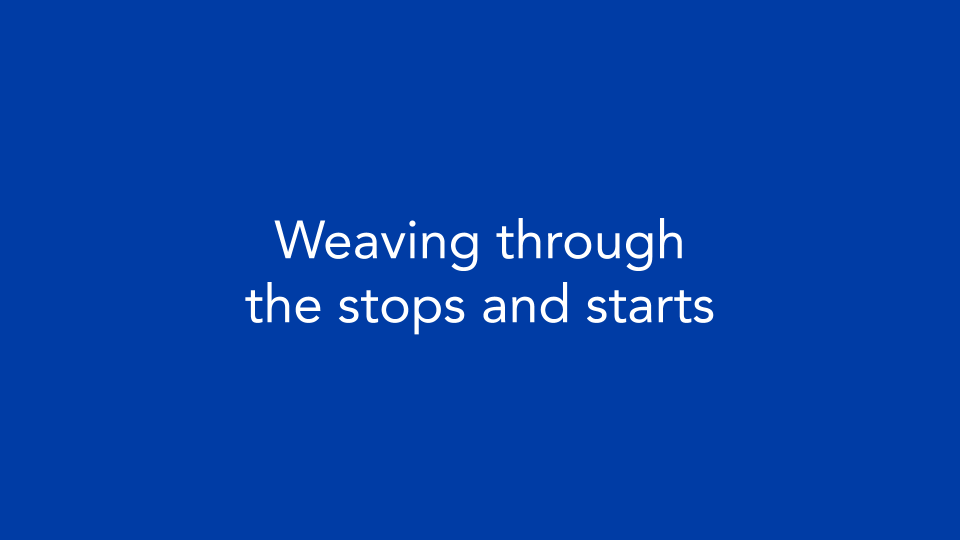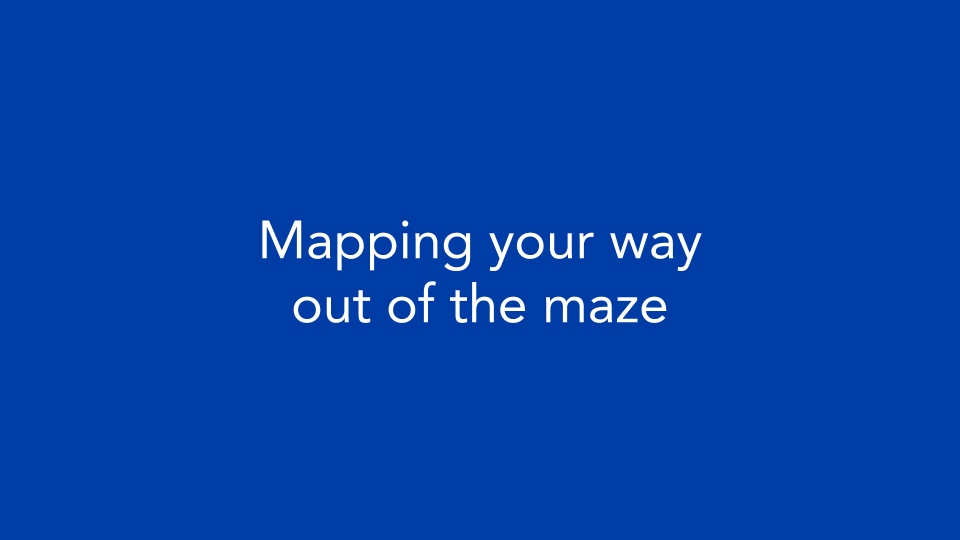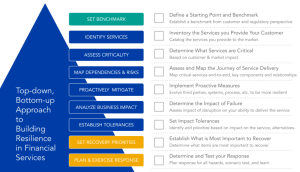Synthesising a Common Regulatory View of Resilience
Author: Paula Fontana
 As regulatory guidelines continue to evolve, resilience, business continuity, and risk management teams are proactively assimilating what true north looks like for their firms, blending oversight with experience. In a prolonged era of turbulence, actions taken today to protect service to customers and insulate the firm from the unexpected have never mattered more. How do you synthesise a common regulatory view of resilience?
As regulatory guidelines continue to evolve, resilience, business continuity, and risk management teams are proactively assimilating what true north looks like for their firms, blending oversight with experience. In a prolonged era of turbulence, actions taken today to protect service to customers and insulate the firm from the unexpected have never mattered more. How do you synthesise a common regulatory view of resilience?
In our latest roundtable discussion, Dean Beaumont, Head of Resilience UK&I, EMEA & APAC at Experian, and Lisa Mellor, Head of Risk UK&I at Experian, took us on the journey of how they established a benchmark and a starting point for their work aligning to recent changes in regulatory frameworks — new consultation papers from the Basel Committee, the maturing UK expectations, and new guidance from US regulators.
Establishing a benchmark is one of the most important steps you can take on your firm’s journey to resilience, allowing you to step back and assess:
- What an integrated view of the guidance looks like for your firm
- Where you stand up well to that merged picture of the ideal
- Where you have some work yet to do
Approximately 50% of resilience leaders in our financial services cohort say they are currently making this assessment for their organisation. Like any other digital transformation initiatives, knowing the who, the what, the why, and the how before you start can be a guiding force throughout the implementation of your technology programme.
Determining where your firm stands with regard to a quickly evolving matrix of regulatory expectations can seem like an insurmountable task. Further, a good assessment takes into account the complex inner workings of the firm itself — requiring your team to engage a wide and varied set of constituents, not just once, but on an ongoing basis. A clear definition is not just helpful for getting teams to take action on improving the firm’s operations, it’s also critical to securing resources, proving value, and getting buy-in from executives.
Read on for 3 takeaways from our discussion and survey, from planning for the fits and starts to managing the health of the global ecosystem.
1. Weaving through the stops and starts
Your executive team, technology, information risk management team, human resources, facilities, operations, finance, digital transformation — these teams are integral to the success of any resilience initiative. Dean and Lisa created a ‘Resilience Forum’ to manage the effort, approach, and roadmap for the effort at the end of 2018.
However, as is often the case, the priorities of the business shifted. Coming back from the holiday break in January 2019, the group was repurposed for Brexit.
November 2019, the Experian team picked the effort back up with Fusion to better understand and map their critical applications. That work stopped again in early 2020 with the advent of the pandemic.
As many in our cohort acknowledged, these efforts typically come down to the expertise of the same subject matter experts. When it comes to ensuring your firm is well positioned to meet the timelines set forth by the regulatory agencies, plan for interruptions in work as a matter of course.
Executive changes, current events, changes in the guidance, priorities in the organisation can all have a discrete impact on the firm’s ability to move forward with operational resilience.
Dean Beaumont and Lisa Mellor of Experian discuss building a culture of resilience:

Key Takeaway: While the world will not stop turning for your resilience effort, it’s critical to keep regulatory and best practice improvements on your firm’s radar. Working with the grain of your culture, but also being consistent about forward momentum, ensures your organisation will be prepared to meet the timelines set forth by regulators without exception. Communicate the things that you need to do and want to do, and continually evolve the perspective as you learn over time.
2. Mapping your way out of the maze
With around 2,000 global requirements currently in place governing your programme, it can often feel like you are navigating a maze of complexity. What constitutes good practice? What is the summation of what is wanted from a regulatory perspective? How do you get to a logical route of what the discussion papers want you to do?
Often this requires institutions to spend thousands of hours of work effort to come to actionable activity. Influencing your cross-functional peers to take action on regulatory and best practices governing resilient operations may be the ultimate goal, but first you need to empower teams with the right information.
Dean and Lisa engaged Unified Global to help them break down the guidance and establish a common understanding of where Experian stands today, where Experian needs to focus next, and where Experian must focus for the long-term.
Mapping your way out of the maze of regulatory guidance with Unified Global:

Key Takeaway: With many varied jurisdictions and rapidly evolving regulations, it can be difficult for firms to establish a common picture of where the firm stands today, where it is going, and establish a perspective on a destination. Technology can be an effective vehicle for making this assessment in a way that allows you to engage your entire firm and recommend key areas of focus, both point-in-time and on an ongoing basis.
3. Managing to the health of your customer and the ecosystem
COVID has accelerated many dynamics long in play and kicked off a cascading set of disruptions the world has never seen. When making an assessment of your current posture, don’t neglect aspects that are outside of the firms’ control — geopolitical conflict, rising infection rates, third party disruption, escalating cyber events.
From a regulatory perspective, much of the guidance has centered around managing the health of the global economy and market infrastructure. Understanding the complex web of dependencies, both inside and outside your organisation (the things you can control and the things you can’t control), is foundational to building a more resilient firm.
Key Takeaway: Regulators have started mapping the bigger picture, looking at the dependencies and relationships between various functional units within the global economy, uncovering single points of failure, opportunities to build efficiency, and opportunities to bolster the resilience of the system. By taking a customer-first, broader economic view of your firm’s role in the success of the global economy, you build a fuller picture of emergent risk and can take a more proactive role in managing the health of the ecosystem.
Conclusion
In summary, plan for interruptions in your journey weaving resilience into the fabric of the organisation. Resilience isn’t something you accomplish overnight, but something you build over time in tandem with many stakeholders inside and outside of your firm. By maintaining a broader view of your firm’s role in maintaining the health of your customer and the ecosystem, and engaging stakeholders in a broader partnership, you create the fundamental underpinnings of a successful resilience initiative for all.

The Journey to Resilient Operations
Whether you are just getting started, or well into your resilience transformation programme, technology can be an essential tool in making your plans actionable and scalable.
Contact us to learn more about how Unified Global and Fusion can help you meet the operational resilience mandate in financial services, or check out our November product showcase highlighting Fusion’s purpose-built operational resilience framework.
Curious about Fusion’s risk and resilience roundtable programme?
I couldn’t be more grateful for Dean Beaumont, Lisa Mellor, the Unified Global team, and the Fusion Executive Operational Resilience community for taking the time to invest in their peers. By providing such great benchmark data and joining regular roundtables to discuss the results, these leaders are helping improve the resilience of an entire industry — building a more resilient world.
If you or someone you know would be interested in joining the Fusion Roundtable programme, please take our signup survey.


